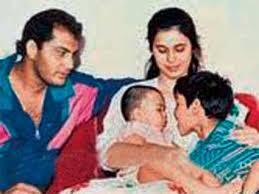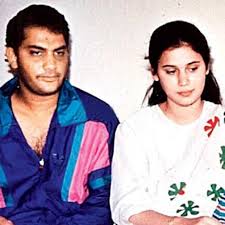
Naureen, once married to former Indian cricket captain Mohammad Azharuddin, has captured public interest through her early marriage, widely publicized divorce, and subsequent life choices. This narrative explores her origins, her years with Azharuddin, her journey post-separation, and the societal forces that sustain her story’s relevance, crafted with fresh perspectives.
Beginnings and Union with Azharuddin
At 16, Naureen wed Mohammad Azharuddin in 1987, stepping into the orbit of a cricketing icon at the height of his career. As captain of the Indian team in the late 1980s and early 1990s, Azharuddin’s rising fame brought attention to their private life. Together, they raised two sons, Mohammad Asaduddin and Mohammad Ayazuddin, with Naureen focusing on nurturing their family while Azharuddin’s celebrity grew. Initially shielded from the public eye, their marriage soon faced intense media focus due to his prominence, foreshadowing turbulent times ahead.

The High-Profile Split
In 1996, after nine years, Naureen and Azharuddin parted ways when his affair with Bollywood actress Sangeeta Bijlani, whom he later married, became public. The divorce gripped India’s media, merging cricket’s allure with Bollywood drama. Naureen, in her mid-20s, was cast as the betrayed partner, a narrative heightened by cricket’s cultural weight in India. The tragic death of their son Ayazuddin in a 2011 road accident deepened public empathy for Naureen, adding a somber note to her story.
Reclaiming Her Life: New Chapters and Remarriages
Post-divorce, Naureen embraced privacy but forged a new path, reportedly marrying twice:
- First Remarriage: Around 2001 (some sources suggest 2010), Naureen married a Canadian businessman in real estate. Information is limited, with varying reports on whether she had one or two children from this union.
- Second Remarriage: Later, she wed a UK-based Muslim community leader and cleric, with whom she reportedly has a son. Residing in London, Naureen works as a finance professional and educator, balancing career and family.
Her enduring connection with her son Asaduddin, who has pursued law and cricket, underscores her commitment as a mother through personal trials.
Societal Forces Sustaining Her Story
Naureen’s narrative endures due to several factors:
- Cricket’s Cultural Dominance: In India, cricket stars are idols, and their personal lives draw relentless scrutiny. Azharuddin’s legacy as a captain and politician keeps his past, including his time with Naureen, in focus.
- Story of Strength: Naureen’s transition from a young wife to an independent woman navigating a public divorce resonates widely. Her choice to remain private, against the backdrop of Azharuddin’s fame, adds intrigue.
- Media’s Role: The 2016 film Azhar, with Prachi Desai playing Naureen, revived interest, portraying her as a figure of quiet fortitude. Media outlets frequently revisit her story, often with repetitive details, to capitalize on public curiosity.
- Gender Perspectives: Naureen’s depiction as a wronged spouse reflects traditional views of women tied to famous men, yet her remarriages and professional life challenge these stereotypes, sparking conversations about autonomy.
Pitfalls of Media Portrayal
Naureen’s story is often muddled by inconsistent and speculative coverage:
- Unreliable Information: Reports conflict on details like the timing of her remarriages or the number of children from her second marriage, highlighting gaps in verified data.
- Sensationalized Narratives: Labels like “home wrecker” for Sangeeta Bijlani or unproven links between Azharuddin’s controversies and personal life distort Naureen’s story for dramatic appeal.
- Privacy Tensions: Naureen’s private nature clashes with media efforts to exploit her story, raising ethical concerns about covering those adjacent to public figures.
Wider Cultural Reflections
Naureen’s experience illuminates broader societal themes:
- Fame and Personal Space: The focus on cricketers’ lives highlights the privacy struggles of their families, particularly spouses.
- Gender and Reporting: Media emphasis on Naureen’s marital roles over her professional achievements reveals biases in how women are portrayed.
- Public Connection: Her personal losses and resilience foster empathy, making her relatable despite her reclusiveness.








